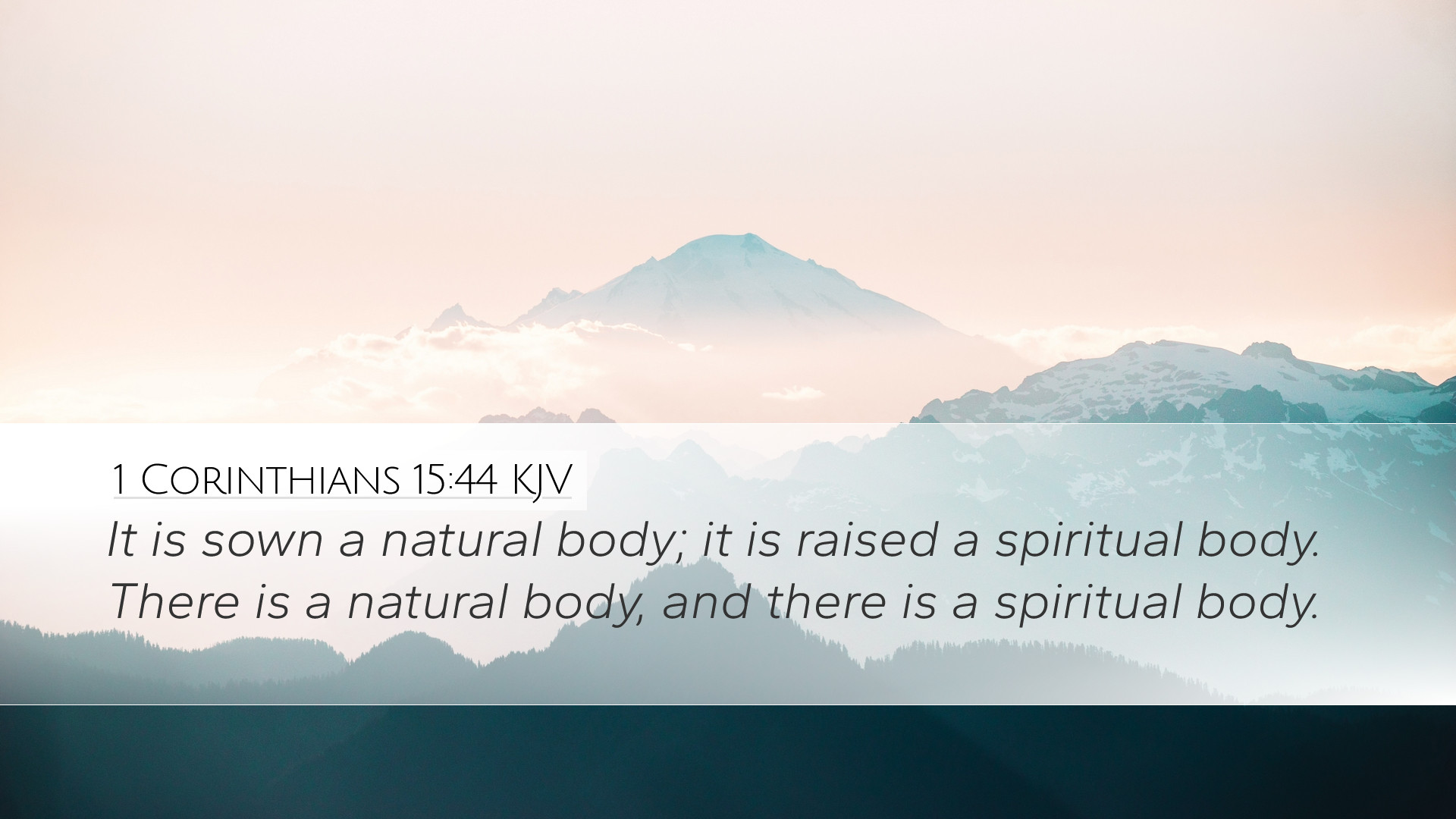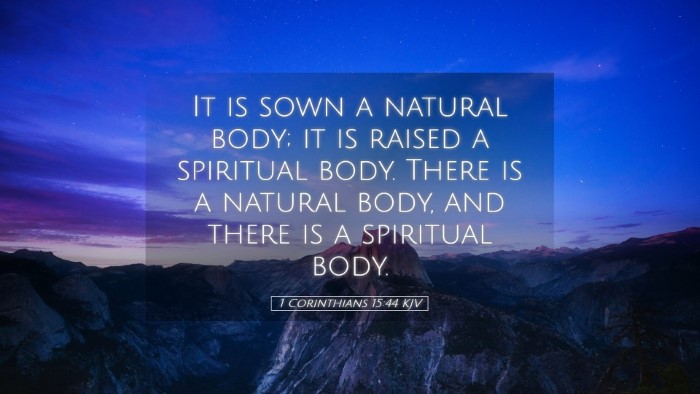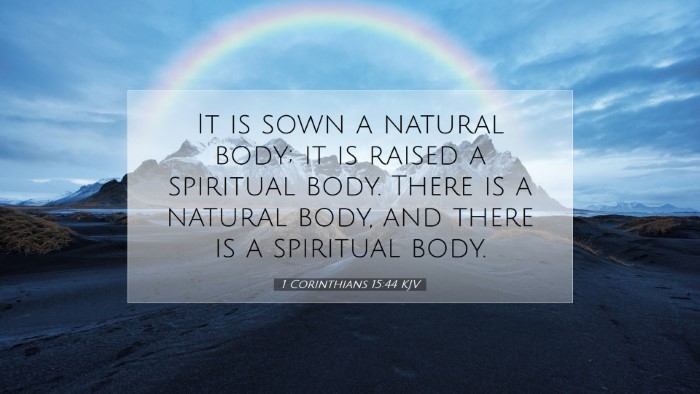Commentary on 1 Corinthians 15:44
Verse: "It is sown a natural body; it is raised a spiritual body. There is a natural body, and there is a spiritual body."
Introduction
This verse from Paul's first epistle to the Corinthians carries profound theological significance regarding the nature of resurrection and the transformation from the earthly to the heavenly. The distinction between the "natural" and "spiritual" bodies is a foundational concept in eschatological thought. This commentary will draw on insights from public domain sources including Matthew Henry, Albert Barnes, and Adam Clarke to unravel the depths of this verse.
Contextual Overview
The Apostle Paul addresses the Corinthians to clarify misconceptions about resurrection that had arisen within the church. The cultural backdrop of Corinth was steeped in philosophical materialism, where the idea of resurrection was often met with skepticism. Paul, therefore, aims to explain the transformative nature of the resurrection body, contrasting it with the natural body we inhabit in our earthly lives.
Exegesis of 1 Corinthians 15:44
The Natural Body
The term "natural body" in this context refers to the physical body that is subject to decay, sin, and the limitations of earthly existence. Matthew Henry elucidates this by noting that earthly bodies are "mortal and corruptible", designed for temporary existence and functionality in the physical realm.
The Spiritual Body
In contrast, the "spiritual body" signifies a transformational reality that transcends earthly limitations. Albert Barnes points out that a spiritual body is one that is "adapted for the eternal world". This spiritualization does not imply a disembodiment but rather a radical enhancement and glorification of the body, suitable for life in the presence of God.
Theological Implications
The transition from a natural body to a spiritual body addresses several key theological themes: identity, continuity, and the hope of resurrection.
Identity and Continuity
Adam Clarke emphasizes the continuity of identity between the earthly and the resurrected body. While the spiritual body is transformed, it retains the essential identity of the individual. This continuity assures believers that their resurrection will not erase their personhood but will fulfill it.
The Hope of Resurrection
This verse articulates a core doctrine of Christianity: the hope of resurrection. Paul argues that just as Christ was raised, believers too will be raised in a transformed state. This provides pastoral assurance as it highlights victory over death and an eternal existence with God.
Practical Applications
Understanding the distinction between the natural and spiritual bodies has several practical implications for Christian living.
- Encouragement in Suffering: Believers are assured that their present sufferings are temporary and contribute to future glory (Romans 8:18).
- Focus on Spiritual Growth: The knowledge of an eternal spiritual body encourages believers to invest in their spiritual growth and pursuits.
- Hope in Evangelism: The certainty of resurrection should motivate Christians to share their faith with others, offering them the same hope.
Conclusion
1 Corinthians 15:44 encapsulates profound truths about the nature of the resurrection and the transformative power God exerts through Christ. As we embrace both the natural and spiritual aspects of our existence, we are called to live with the assurance of resurrection, hopeful in the promise of eternal life. The insights from well-respected commentaries help illuminate this sacred text, fostering deeper understanding and appreciation among theologians, students, and pastors alike.


